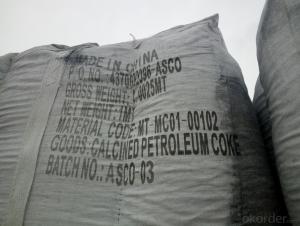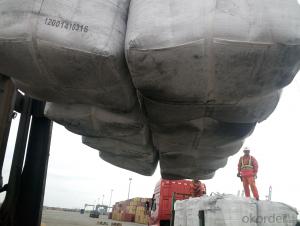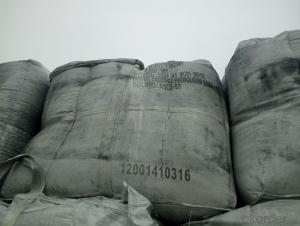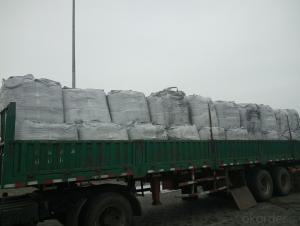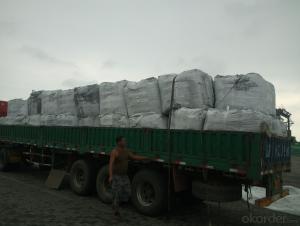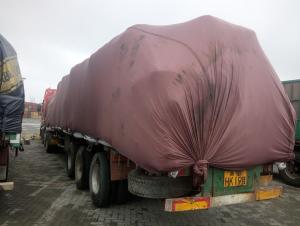Calcined Pitch Coke with Ash 0.5 percent max as carbon additive
- Loading Port:
- Tianjin
- Payment Terms:
- TT OR LC
- Min Order Qty:
- 21 m.t.
- Supply Capability:
- 8000 m.t./month
OKorder Service Pledge
OKorder Financial Service
You Might Also Like
Introduction
Pitch Coke/Coal Tar Pitch is a kind of black brittleness and blocky piece, lustrously at normal temperature. It has special odour and poisonous and can be easily flame when melting, second-grade inflammable solid.
Pitch Coke/Coal Tar Pitch is obtained from powerfully processed coal tar. Compared to petroleum asphalt, the adhesiveness is better. Coal Tar Pitch is high quality tar production with high fixed carbon. It has excellent adhesion, waterproofing and resistance against seawater, oil and various chemicals. In these properties, it is much better than petroleum asphalt tar.
It can be used to produce painting, electrode, pitch coke, and tar felt. It also can be used as fuel and the raw material of asphalt carbon black.
Features:
The morphology, chemistry and crystallinity of recarburisers have a major impact on the overall casting cost. The combined application and cost benefits, which are derived through the use of Desulco, enable foundries to manufacture castings in a highly cost effective manner.
reduces
Recarburiser consumption
Power consumption
Inoculant consumption
MgFeSi consumption
Furnace refractory wear
Scrap rate
Tap to tap time
Slag inclusions risk
Chill
increases
Casting microstructure
Productivity
Process consistency
Carbon Recovery
Compared with calcined petroleum coke, acetylene coke and
graphite electrode scrap, Desulco yields the highest carbon
recovery and fastest dissolution time
Specifications:
CPC | |||
F.C.% | 98.5MIN | 98.5MIN | 98MIN |
ASH % | 0.8MAX | 0.8MAX | 1MAX |
V.M.% | 0.7 MAX | 0.7 MAX | 1 MAX |
SULFUR % | 0. 5MAX | 0. 7MAX | 1MAX |
MOISTURE % | 0.5MAX | 0.5MAX | 1MAX |
Pictures:
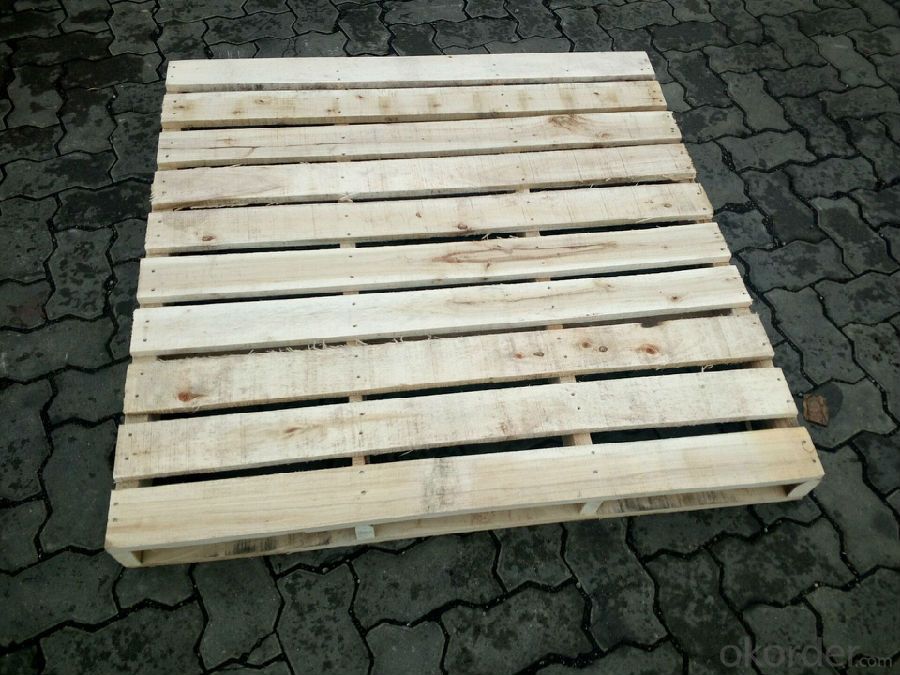
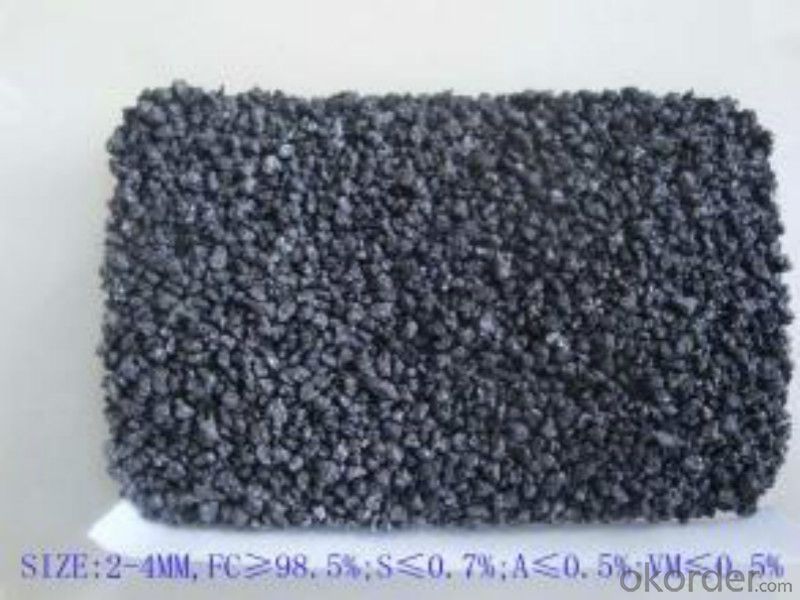

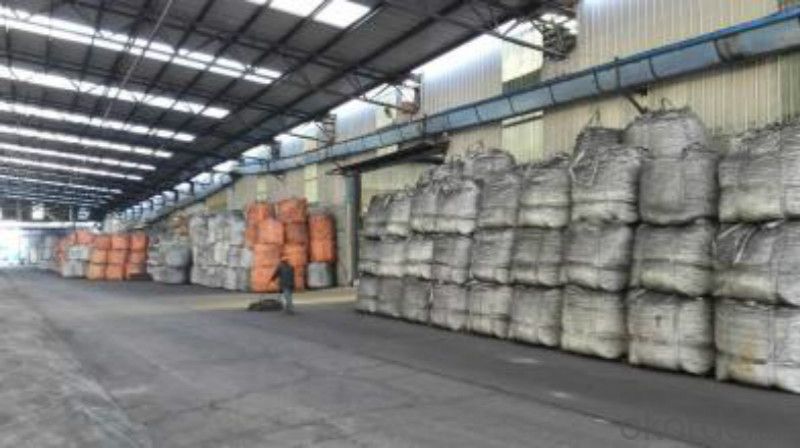
FAQ:
1.MOQ:2 Containers |
2.Size:1-3mm,1-5mm,2-6mm,3-5mm and as the customer's requirement |
3.Packing: 1 ton jumbo bag or 25kgs paper in bag |
4.Payment:T/T or L/C at sight |
5.Delivery time: within 15 days after receiving the deposit |
6.Usage: it is as carbon raiser,widely used in steelmaking,casting,casting iron,steel foundry,aluminum metallury. |
- Q: There is a graphite mine, looking for three experts engaged in mineral processing industry asked. They say earthy graphite, and the answer to the taste is quite different. Some say that the fixed carbon content of 15, and some say graphite grade 90%. The same sample. Some people say that very valuable, and some say that the grade is too low, worthless. I'm all confused. What do you mean by graphite grade and fixed carbon?
- No, fixed carbon is the index of industrial analysis in coal, which is used to calculate calorific value. Graphite grade refers to the content of graphite in graphite ore.
- Q: Power plant water treatment plant, there is a carbon removal device, the expert pointing out what the principle is it?
- The water enters from the upper part of the carbon removing device and is poured down by the water distribution equipment and enters the water tank from the lower part through the filling layer. In addition to carbon, due to the blocking effect of filler, flow down from the top of the water is dispersed into many small stocks or drop, from the bottom of the drum into the air and water contact area is very large, and the partial pressure of carbon dioxide in the air is very low, so it will come out from the water desorption carbon dioxide quickly away. Water can be removed by blowing carbon, which can reduce the carbon dioxide content to below 5mg/L. In fact, the simple point is that the amount of dissolved gas in water is proportional to the pressure of the air he touches. This principle is similar to the principle of the atmospheric Deaerator in the power plant. I hope I can help you
- Q: Will long-term use of carbon alloy chopsticks cause cancer?
- Do chopsticks also cause cancer? Experts say, should not use too long, 3 to 6 months that change, pay attention to chopsticks material selection, use and maintenance. Have you noticed how often the chopsticks are changed at home? Recently, a news about the need for regular replacement of chopsticks, attracted the attention of Internet users. According to reports, hidden in the small groove in the chopsticks bacteria, may cause dysentery, gastroenteritis and other diseases, it is recommended that the public, chopsticks should be replaced at regular intervals of 3~6 months. This makes many people surprised, "used so many years chopsticks, do not know!"." Yesterday morning, in the south near Xi'an Renrenle supermarket shopping public Ms. Hao said. Subsequently, a random survey of 20 members of the public, of which 4 people said that in the six months of internal moving or kitchen renovation and replaced chopsticks. While the other 16 citizens, the number of chopsticks used in the home was 1~3 years. Especially for families with old people, chopsticks are updated more slowly. "The old man can't bear to throw it. He can't help it. Every time he comes to the restaurant, the chopsticks are not enough."." Liu said the public. In this regard, yesterday, director of the Xi'an Municipal Hospital of traditional Chinese Medicine Department of Gastroenterology physician Huang Yahui said, if the wood and bamboo chopsticks used for a long time, it is easy to breed bacteria sawdust loose.
- Q: How do fossil fuels release carbon into the atmosphere?
- Combustion, a process in which fossil fuels like coal, oil, and natural gas are burned for energy, results in the release of carbon into the atmosphere. This carbon, which had been trapped underground for millions of years, is converted into carbon dioxide (CO2) gas. During combustion, the carbon and hydrogen atoms present in fossil fuels react with oxygen from the air, producing not only CO2 but also water vapor (H2O) and heat. The released CO2 is then emitted into the atmosphere, where it acts as a greenhouse gas. The burning of fossil fuels in various sectors such as transportation, electricity generation, and industrial processes plays a significant role in the escalating levels of atmospheric CO2. The continuous extraction and rapid burning of these fuels have led to a substantial increase in the concentration of CO2 in the Earth's atmosphere over the past century. This rise in atmospheric CO2 is a primary driver of climate change, as CO2 acts as a heat-trapping gas, contributing to the greenhouse effect. The greenhouse effect occurs when the Earth's atmosphere retains the heat radiated from the surface, resulting in a global temperature increase. Therefore, the release of carbon into the atmosphere from fossil fuels is a major concern due to its significant role in climate change and the subsequent environmental and societal impacts. To address these effects, there is a growing global effort to transition towards renewable and cleaner energy sources, reduce fossil fuel consumption, and implement sustainable practices.
- Q: How is carbon used in the medical field?
- The medical field utilizes carbon in various ways, thanks to its unique properties. Activated charcoal, for example, is commonly used in hospitals to treat cases of poisoning or drug overdoses. Its large surface area allows it to adsorb toxins and chemicals, preventing their absorption into the bloodstream. Carbon also plays a role in medical imaging techniques like positron emission tomography (PET) scans. Carbon-11, a radioactive form of carbon, is used to label molecules such as glucose in PET scans. This labeled carbon is injected into the patient, and a PET scanner detects its distribution in the body. This technique aids in diagnosing and monitoring diseases, including cancer, by visualizing metabolic activity in organs and tissues. Additionally, carbon-based materials like carbon nanotubes and graphene are extensively researched for their potential in drug delivery systems. These materials can be modified to transport therapeutic agents, such as drugs or genes, to specific targets in the body. Carbon nanotubes, in particular, have shown promise in enhancing drug delivery efficiency and reducing side effects. Furthermore, carbon plays a vital role in manufacturing medical devices and implants. Carbon fiber-reinforced polymers are used in orthopedic implants and prosthetics due to their strength, flexibility, and biocompatibility. Carbon-based materials are also crucial in producing electrodes for medical devices like pacemakers, defibrillators, and neurostimulators. In conclusion, carbon has a wide range of applications in the medical field, from treating poisonings to improving diagnostic imaging techniques, drug delivery systems, and the production of medical devices. It continues to be a crucial component in advancing medical technology and enhancing patient care.
- Q: How do you stick carbon fabric?
- 6, maintenance(1) after sticking the carbon fiber cloth, it is necessary to conserve 24h naturally to reach initial curing, and ensure that the curing period is free from interference(2) before each process, the resin should be covered with plastic film before it is cured so as to prevent sand or rain from attacking(3) when the temperature of the resin curing is reduced to less than 5 degrees, low temperature curing resin can be adopted, or effective heating measures can be adopted(4) CFRP after natural curing required to meet the design strength of time: the average temperature is 10 DEG C, 2 weeks; the average temperature is 10 degrees centigrade above 20 DEG C, 1 to 2 weeks; the average temperature is higher than 20 degrees in 1 weeks. During this period should be to prevent the patch part by the hard impact.7. PaintingThe coating shall be done after the initial curing of the resin and shall comply with the relevant standards and construction requirements for the coating used
- Q: How does carbon affect the formation of blizzards?
- Carbon does not directly affect the formation of blizzards. Blizzards are primarily caused by the collision of warm and cold air masses, resulting in heavy snowfall and strong winds. However, carbon emissions and climate change can influence weather patterns, potentially leading to more intense or frequent blizzards in certain regions due to alterations in atmospheric conditions.
- Q: What is the melting point of carbon?
- The melting point of carbon is determined by the form in which it is discovered. There are several forms of pure carbon, such as graphite and diamond. Graphite possesses a melting point of about 3,600 degrees Celsius (6,500 degrees Fahrenheit), whereas diamond has an even higher melting point of roughly 3,827 degrees Celsius (6,920 degrees Fahrenheit). The reason for these elevated melting points lies in the robust covalent bonds between carbon atoms in these structures. However, it is crucial to acknowledge that carbon can also exist in amorphous states, like coal or charcoal, which lack a specific melting point since they undergo a gradual decomposition process upon heating.
- Q: How does carbon dioxide affect the pH of soil?
- Soil pH can be influenced by carbon dioxide through a process known as carbonation. When carbon dioxide dissolves in water, it creates a weak acid called carbonic acid (H2CO3). This acid can react with certain minerals and compounds, such as limestone or calcium carbonate, found in the soil, causing them to dissolve. As a result, positively charged ions like calcium (Ca2+) or magnesium (Mg2+) are released into the soil solution, which can raise the pH or make the soil more alkaline. Moreover, the presence of carbonic acid can also increase the availability of specific nutrients in the soil. For instance, it can enhance the solubility of phosphorus, making it easier for plants to absorb. This can ultimately improve soil fertility. However, it's important to consider that the impact of carbon dioxide on soil pH can vary due to different factors, including the concentration of carbon dioxide, soil type, and the presence of buffering agents. In some cases, the soil's buffering capacity can limit the effects of carbonic acid on pH changes. Therefore, while carbon dioxide can influence soil pH, it is just one of many factors that can affect the overall acidity or alkalinity of the soil.
- Q: How does carbon affect the color of gemstones?
- Carbon can have a significant impact on the color of gemstones. In fact, it is one of the main factors that contribute to the coloration of certain gemstones. One of the most well-known examples is diamonds. Diamonds are made up of carbon atoms arranged in a crystal lattice structure. The presence of impurities or defects within this crystal lattice can cause the diamond to exhibit various colors. When there is a high concentration of carbon impurities in a diamond, it can result in a yellow or brown tint. These are known as "fancy colored diamonds" and are graded on a scale that ranges from D (colorless) to Z (light yellow or brown). The more carbon impurities present, the more intense the color becomes. On the other hand, a diamond with a lower concentration of carbon impurities will appear more colorless. Carbon can also affect the color of other gemstones. For example, certain varieties of sapphires can contain traces of carbon that give them a grayish or blackish appearance. These are known as "black sapphires" or "star sapphires" and are highly sought after for their unique coloration. Similarly, carbon impurities in rubies can cause them to have a purplish hue. It is important to note that while carbon can impact the color of gemstones, it is not the only factor that determines their color. Other elements or impurities, as well as the crystal structure and light absorption properties of the gemstone, also play a significant role. Overall, the presence of carbon in gemstones can result in a wide range of colors, adding to their beauty and desirability in the world of gemology.
Send your message to us
Calcined Pitch Coke with Ash 0.5 percent max as carbon additive
- Loading Port:
- Tianjin
- Payment Terms:
- TT OR LC
- Min Order Qty:
- 21 m.t.
- Supply Capability:
- 8000 m.t./month
OKorder Service Pledge
OKorder Financial Service
Similar products
Hot products
Hot Searches













